Getting into the archive: John Harrison’s notebook
August 15, 2014
Meteorological phenomena were understood and comprehended differently at different points in time. In the early modern period, for example, detailed descriptions of violent storms, unusual displays of the northern lights, the shape of hailstones, or extremes of cold, heat, flooding or drought, especially in as much as such events disrupted normal everyday life, were …
St Kilda: Extreme Weather on the Edge of the World
August 4, 2014
St Kilda: an island community’s perception of weather St Kilda is an isolated archipelago forty-one miles west-northwest of North Uist in the North Atlantic Ocean comprising the islands of Hirta, Soay, Boreray and Dun, as well as several sea stacks, and are the westernmost islands of the Outer Hebrides of Scotland. It is an interesting …
Extreme weather events in focus: “Hail as hazard”
July 24, 2014
Hailstorms as extreme weather events Although last weekend’s storms didn’t include any hail (at least not in Nottingham), they did get me thinking more about the impacts of extreme storm events in the UK. This post is the first of a series that will focus on different types of extreme weather event, their impacts, and …
Extreme weather at the WCEH, Guimaraes, Portugal
July 14, 2014
World Congress on Environmental History (WCEH) This week Georgina and I were lucky enough to be able to attend the 2nd World Congress on Environmental History (WCEH) in Guimaraes, Portugal. Although this trip wasn’t an official part of the Weather Extremes project, the conference included lots of talks on extreme weather events from a variety …
Getting into the archive – The Buildwas Earthquake of 1773: an earthquake or a landslip?
June 30, 2014
Cartographic and textual sources Early in the morning of the 27th May 1773, a remarkable earthquake or rather landslip occurred at a place called ‘the Birches’ located on the hillside above the River Severn between Buildwas and Coalbrookdale, Shropshire, not far from the site of the present day Ironbridge power station (see featured image above). …
Sources in focus – Parish Registers
June 20, 2014
Parish Registers as a source of information on extreme weather On a recent visit to The Hive, the new home of Worcestershire Archives, several of the items on my list of documents to consult were Parish Registers. Parish Registers primarily contain lists of baptisms, marriages and burials making them a popular source of information for …
Getting into the Archive – The Hingham Town Book (part 2)
June 9, 2014
The Hingham Town Book A few weeks ago, Lucy reported on her recent visit to Norfolk Record Office. A source which I alerted her to following discussion with members of the British Agricultural History Society at the annual spring conference was the Hingham Town Book. As Lucy noted in her blog, the Hingham Town Book, …
Now we are six (months old)
May 30, 2014
We are now six months into our research project and realising the scale of the undertaking we have set ourselves. At our recent team meeting, fueled by Lucy’s lemon cake and with the splendid panorama of the Liverpool skyline as a backdrop, we spent two days reporting on activities, discussing our progress and our strategy …
Getting into the archive: Joseph Woolley’s diaries
May 23, 2014
Joseph Woolley This week I thought I would detail another source that I’ve been working on in Nottinghamshire Archives. Born c. 1773, Joseph Woolley was a framework knitter and stocking maker from Clifton, Nottinghamshire. There are 6 surviving volumes of diaries, for the years 1801, 1803, 1804-05, 1809, 1813, and 1815. The series record personal …
Getting into the archive: Eighteenth-century weather diaries in Devon
May 16, 2014
Devon Heritage Centre and the National Meteorological Archive The Devon Heritage Centre is housed in an unprepossessing building amidst a jumble of light industrial units, car parks, supermarkets and arterial roads on the edge of the city of Exeter in Devon. It holds archival and local study material relating to that county. Contained within the …

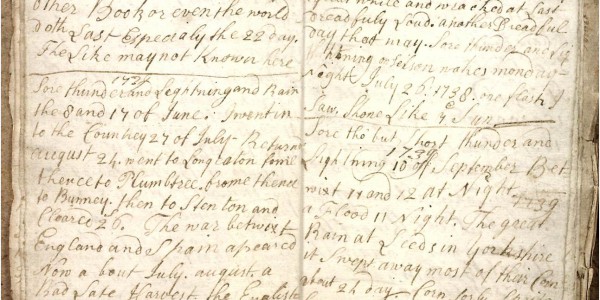

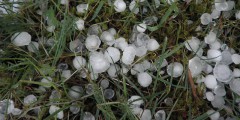
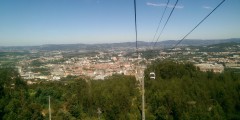

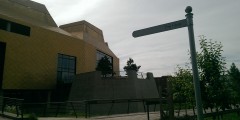

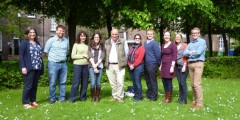

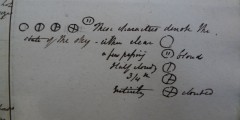
Recent Comments